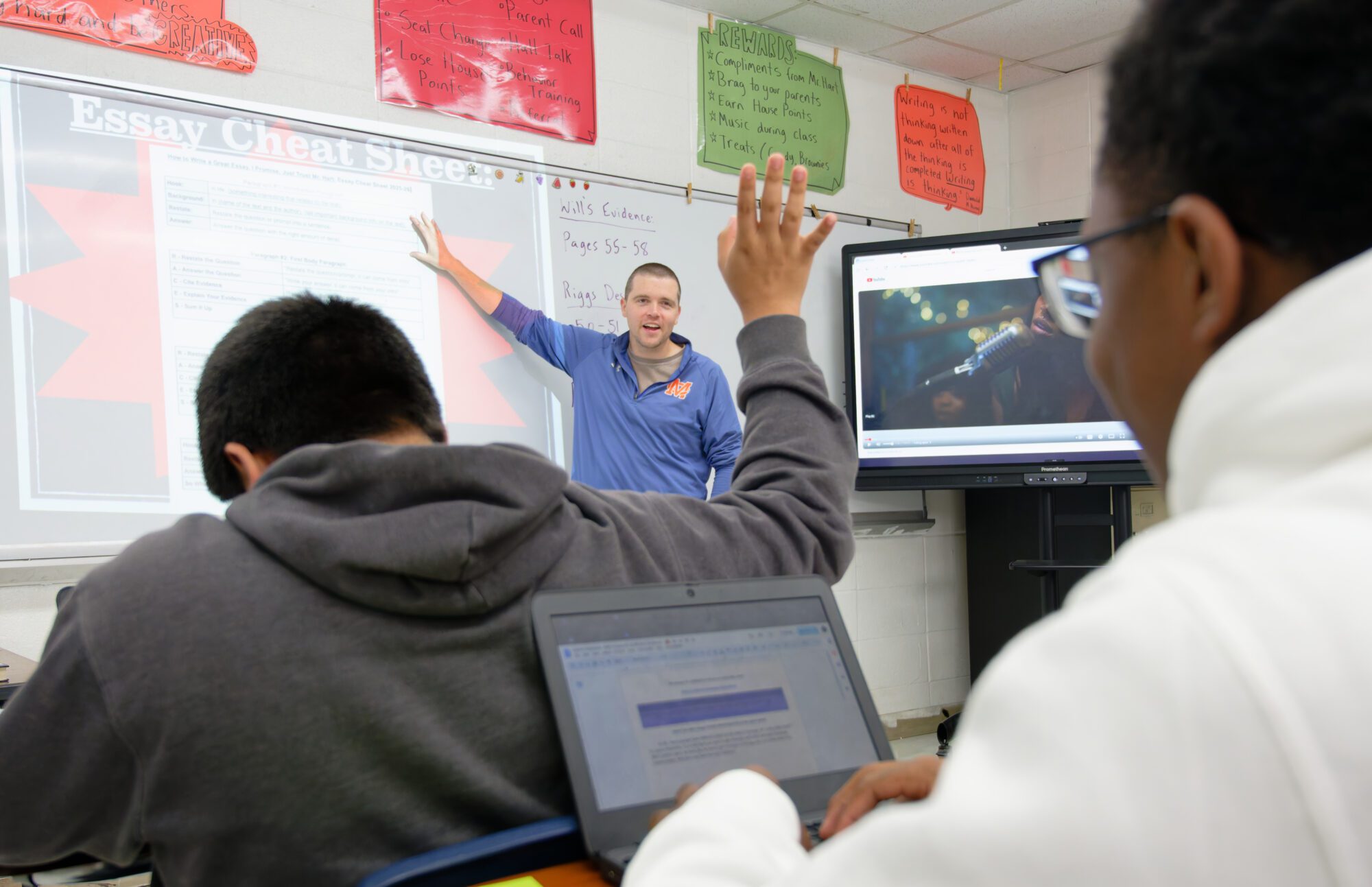Report on Postsecondary Education Accessibility in Arizona and Alignment with Sustainable Development Goals
Executive Summary
A study by the Center for the Future of Arizona, titled “Unlocking Potential,” indicates that enhancing access to postsecondary education is a critical driver for economic and social development in Arizona. The findings strongly align with several UN Sustainable Development Goals (SDGs), particularly those concerning quality education, economic growth, and reduced inequalities. Expanding programs such as dual enrollment can generate significant economic returns and create a more equitable and skilled workforce for the future.
Economic Advancement through SDG 8: Decent Work and Economic Growth
The report highlights a significant opportunity for Arizona to stimulate its economy by investing in its educational infrastructure, an objective that directly supports SDG 8. Key findings related to economic growth include:
- Economic Impact: Expanding postsecondary access could generate millions of dollars in economic impact for the state.
- Workforce Development: Enhanced educational programs are essential for supplying skilled workers to major employers, fostering sustainable economic growth and decent work opportunities.
- Increased Lifetime Earnings: Graduates who participate in advanced programs are projected to earn approximately $1 million more over their lifetimes, contributing to economic vitality and supporting SDG 1 (No Poverty).
- Untapped Potential: According to Jim Rounds of the Rounds Consulting Group, Arizona has substantial, unrealized opportunities for economic gain through improved workforce development policies and business engagement.
Fostering SDG 4: Quality Education through Dual Enrollment Programs
Dual enrollment programs serve as a powerful mechanism for achieving the targets of SDG 4, which aims to ensure inclusive and equitable quality education for all. The study demonstrates the effectiveness of these programs with the following outcomes:
- Increased Pursuit of Higher Education: Over 90% of Arizona high school students who participate in dual enrollment courses proceed to postsecondary education.
- Accelerated Degree Completion: These programs enable students to complete their college degrees more quickly, reducing costs and time barriers.
- Higher Likelihood of Graduation: Participation in dual enrollment significantly increases the probability of completing a postsecondary degree.
Overcoming Barriers to Achieve SDG 10: Reduced Inequalities
A significant disparity exists in postsecondary education pursuit, highlighting an inequality that must be addressed to meet the goals of SDG 10. While over 90% of dual enrollment students continue their education, this figure drops to only 48% for the general high school graduate population. Key barriers to expanding these equitable opportunities include:
- Teacher Credentials and Compensation: As noted by Rebecca Gau of Stand for Children Arizona, there is a challenge in recruiting and retaining teachers with the specific credentials required by community colleges to teach dual enrollment courses, which also involves higher pay.
- Insufficient School Funding: A lack of adequate funding for schools hampers the ability to expand and improve dual enrollment and other postsecondary access programs, disproportionately affecting underserved communities.
A Call for Multi-Stakeholder Collaboration (SDG 17: Partnerships for the Goals)
The report underscores that progress requires a concerted effort from various sectors of society, reflecting the principles of SDG 17. Public opinion strongly supports this initiative, with data from Education Forward Arizona showing that over two-thirds of Arizonans view postsecondary access as a critical issue. Recommendations for collaborative action include:
- Policy and Program Development: A strategic focus on creating new policies and programs to expand economic productivity through education.
- Corporate Engagement: Increased involvement from the business community in developing and supporting programs that build a skilled workforce.
- Public Investment: Prioritizing increased funding for schools to support the infrastructure needed for expanded dual enrollment and postsecondary readiness.
Analysis of SDGs, Targets, and Indicators
1. Which SDGs are addressed or connected to the issues highlighted in the article?
-
SDG 4: Quality Education
The article’s central theme is the importance and impact of postsecondary education, specifically dual enrollment programs in Arizona. It discusses accessibility, completion rates, and the need for qualified teachers and funding, all of which are core components of ensuring inclusive and equitable quality education.
-
SDG 8: Decent Work and Economic Growth
The article explicitly links expanded postsecondary education to economic benefits. It opens by stating that increased accessibility could “boost the state’s economy by millions of dollars” and later notes that students who participate in these programs “earn around $1 million more in lifetime earnings.” This directly connects education to workforce development, economic productivity, and individual financial well-being.
-
SDG 10: Reduced Inequalities
The article highlights a significant disparity in educational outcomes. It points out that while 90% of students in dual enrollment programs pursue further education, only 48% of all high school graduates do. The call to expand accessibility to these beneficial programs is an effort to reduce this inequality of opportunity and ensure more students can access pathways to higher education and better economic futures.
2. What specific targets under those SDGs can be identified based on the article’s content?
-
SDG 4: Quality Education
-
Target 4.3: By 2030, ensure equal access for all women and men to affordable and quality technical, vocational and tertiary education, including university.
The article directly addresses this target by focusing on “expanding postsecondary accessibility” and discussing the benefits of “dual enrollment programs.” The entire discussion revolves around making tertiary education more accessible to all high school graduates in Arizona.
-
Target 4.4: By 2030, substantially increase the number of youth and adults who have relevant skills, including technical and vocational skills, for employment, decent jobs and entrepreneurship.
The article connects education to the workforce by mentioning “workforce development programs through major companies like TSMC” and the role of businesses in “expanding the programs that provide them with workers.” This shows a clear link between postsecondary education and acquiring skills for employment.
-
Target 4.3: By 2030, ensure equal access for all women and men to affordable and quality technical, vocational and tertiary education, including university.
-
SDG 8: Decent Work and Economic Growth
-
Target 8.5: By 2030, achieve full and productive employment and decent work for all… and equal pay for work of equal value.
The finding that students in dual enrollment programs “earn around $1 million more in lifetime earnings” directly relates to the economic value of work. Better education leads to better-paying, decent jobs, which contributes to this target.
-
Target 8.6: By 2030, substantially reduce the proportion of youth not in employment, education or training (NEET).
The article highlights that only 48% of all Arizona high school graduates pursue postsecondary education. By advocating for expanded access to programs that increase this pursuit rate (like dual enrollment, which has a 90% continuation rate), the article implicitly addresses the goal of keeping more youth engaged in education and training, thereby reducing the NEET rate.
-
Target 8.5: By 2030, achieve full and productive employment and decent work for all… and equal pay for work of equal value.
-
SDG 10: Reduced Inequalities
-
Target 10.2: By 2030, empower and promote the social, economic and political inclusion of all…
The disparity between the 90% of dual enrollment students and the 48% of all graduates pursuing higher education points to an inequality of opportunity. The article’s call to expand access aims to close this gap, promoting greater economic inclusion by making the pathway to higher lifetime earnings available to a broader segment of the population.
-
Target 10.2: By 2030, empower and promote the social, economic and political inclusion of all…
3. Are there any indicators mentioned or implied in the article that can be used to measure progress towards the identified targets?
-
For SDG 4: Quality Education
-
Indicator: The percentage of high school graduates who pursue postsecondary education.
The article provides specific data points for this indicator: “more than 90% of Arizona high school students who took a dual enrollment courses pursued a postsecondary education, but noted that number falls to only 48% when talking about all Arizona high school graduates.” Progress would be measured by an increase in the 48% figure.
-
Indicator: The rate of college completion.
The article implies this indicator by stating that dual enrollment courses “increased the likelihood of completing a degree.” Measuring the degree completion rate for different student groups would track progress.
-
Indicator: The percentage of high school graduates who pursue postsecondary education.
-
For SDG 8: Decent Work and Economic Growth
-
Indicator: Economic impact on the state.
The article mentions that expanding access could “boost the state’s economy by millions of dollars in economic impact.” This provides a direct, though currently unquantified, economic indicator.
-
Indicator: Lifetime earnings of graduates.
The article explicitly states that participation in these programs causes students to “earn around $1 million more in lifetime earnings,” which is a clear indicator of the economic benefit of education for individuals.
-
Indicator: Economic impact on the state.
-
For SDG 10: Reduced Inequalities
-
Indicator: The gap in postsecondary education enrollment rates between different student groups.
The article provides the data to measure this gap: the difference between the 90% rate for dual enrollment students and the 48% rate for the general graduate population. Reducing this gap would be a key measure of progress in providing more equitable opportunities.
-
Indicator: The gap in postsecondary education enrollment rates between different student groups.
4. Table of SDGs, Targets, and Indicators
| SDGs | Targets | Indicators |
|---|---|---|
| SDG 4: Quality Education | 4.3: Ensure equal access for all… to affordable and quality… tertiary education. | Percentage of high school graduates pursuing postsecondary education (Article cites 90% for dual enrollment vs. 48% for all graduates). |
| Increased likelihood of completing a degree. | ||
| 4.4: Substantially increase the number of youth and adults who have relevant skills… for employment. | Connection of education to workforce development programs (e.g., TSMC). | |
| SDG 8: Decent Work and Economic Growth | 8.5: Achieve full and productive employment and decent work for all. | Increased lifetime earnings (Article cites “$1 million more”). |
| Economic impact on the state’s economy (Article cites “millions of dollars”). | ||
| 8.6: Substantially reduce the proportion of youth not in employment, education or training (NEET). | Proportion of high school graduates not pursuing postsecondary education (Implied as 52% of all graduates). | |
| SDG 10: Reduced Inequalities | 10.2: Empower and promote the social, economic… inclusion of all. | The gap in postsecondary pursuit rates between dual enrollment students (90%) and the general graduate population (48%). |
Source: ktar.com







